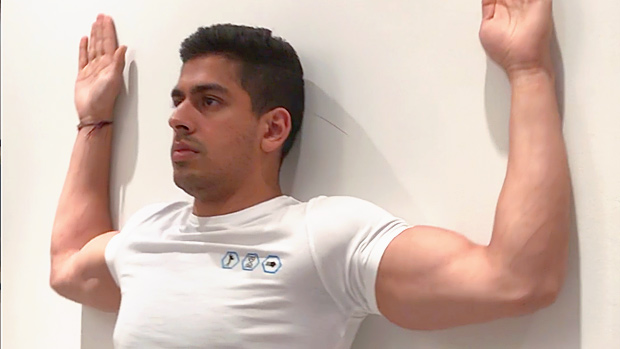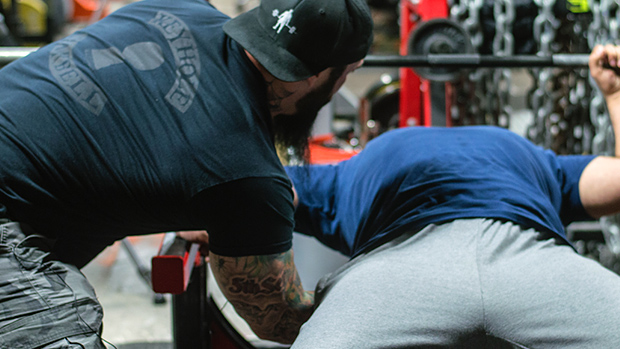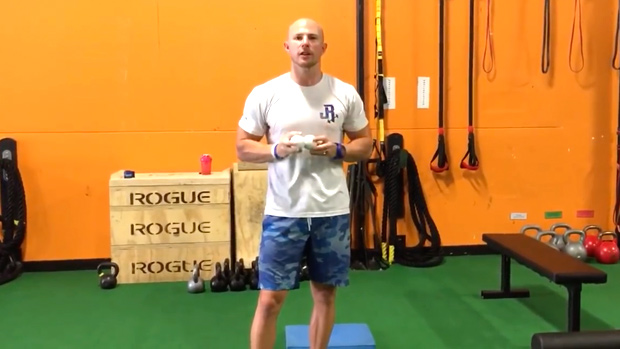Do you have scars from goofing around as a kid, playing sports, or having mishaps at home or work? Did you have a surgical procedure (rotator cuff tear, gallbladder removal, C-section, etc.) that left you with a scar?
Although some of these scars may look badass, they could actually be affecting the way you move, even if you got them years ago.
The wild part about the human body is how acutely sensitive it is to even the smallest deviation from homeostasis. No biological process can happen in isolation, despite how readily we like to compartmentalize areas of the body. Every scar and every surgery will have a lasting impact on your body.
Looking at the Bigger Picture
Let's say, for example, that you tore your ulnar collateral ligament (UCL) while playing baseball. You've since had surgery and returned to normal activity. Although your range of motion and strength may be restored, your body is likely going to move quite differently than it did pre-UCL tear.
Obviously, scar tissue has formed, but neurological changes have happened as well. At the point of surgical incision, doctors have to create another point of trauma to reconstruct your torn ligament. The skin, fascia, and muscles are all compromised in that area, even after it's all stitched up.
The Science
A paper by Bordoni and Zanier notes: "When there is a scar resulting from traumas or surgery in the elbow, the brachial fascia is involved, with adhesions of different subcutaneous layers. Repetitive mechanical stress on a scar may result in an excessive collagen deposition, which enhances fibrosis. Symptoms can arise later as the result of a scar. The radial and ulnar nerves also may be trapped."
So we can't just think of the torn ligament itself, but also how the surrounding structures were affected, and how those areas, in turn, affect others even further down the kinetic chain.
Bordoni and Zanier go on to say: "A scar on the elbow may cause postural problems, which affect walking, and back and neck pain."
Your body may be trying to shift weight towards the "healthy" side to avoid re-injury. The scar tissue around the site of injury may be preventing muscles in the biceps and triceps from contracting properly, which will inhibit the pecs and so on.
It seems crazy to consider how an elbow injury could refer pain symptoms to the neck or lower back, but when you think of the domino effect, the bigger picture makes sense.
In one case study done by Leijnse and Rietveld, a middle-aged female violinist presented overwhelming pain in her left shoulder. The root cause of the pain was determined to be an 11 year-old scar on the same wrist. After mobilizing one of the affected tendons, the patient was able to resume playing the violin without pain.
With my clients, asking detailed questions about surgical history has been helpful. From appendectomies and broken bones to C-section scars, these things can all significantly alter motor control. A scarred area becomes just another compensation strategy for your body.
Taking Care of Your Scars
You obviously can't completely heal a scar, but there are things you can do to mitigate the effects. I tell my clients to massage the scarred area before exercise (and regularly throughout the day, when possible).
If the scar is length-wise, it's best to massage the scar from the bottom up towards the portion that's closest to the heart. Try to stretch the skin upwards as you gently try to get the skin and the fascia to glide properly.
Other tools like acupuncture or cold laser therapy (LLLT) can go a long way in terms of loosening up restrictions caused by old scars.

Once you consider how long-standing injuries may have changed your movement patterns, you may notice pain in other seemingly unrelated areas will disappear. Regardless of how long it's been since your gallbladder removal, the surrounding musculature could still be affected. By regularly mobilizing your scars, you'll help change the neural pathways in your brain and improve your movement patterns.
References
- Bordoni, Bruno, and Emiliano Zanier. "Skin, Fascias, and Scars: Symptoms and Systemic Connections." Journal of Multidisciplinary Healthcare 7 (2014): 11–24. PMC. Web. 1 Apr. 2018.
- Leijnse, J. N. A. L., and A. B. M. Rietveld. "Left shoulder pain in a violinist, related to extensor tendon adhesions in a small scar on the back of the wrist." Clinical rheumatology 32.4 (2013): 501-506.
- Rodríguez, Raúl Martínez, and Fernando Galán del Río. "Mechanistic basis of manual therapy in myofascial injuries. Sonoelastographic evolution control." Journal of bodywork and movement therapies 17.2 (2013): 221-234.
- Stecco, Antonio, et al. "Anatomical study of myofascial continuity in the anterior region of the upper limb." Journal of Bodywork and Movement Therapies 13.1 (2009): 53-62.





